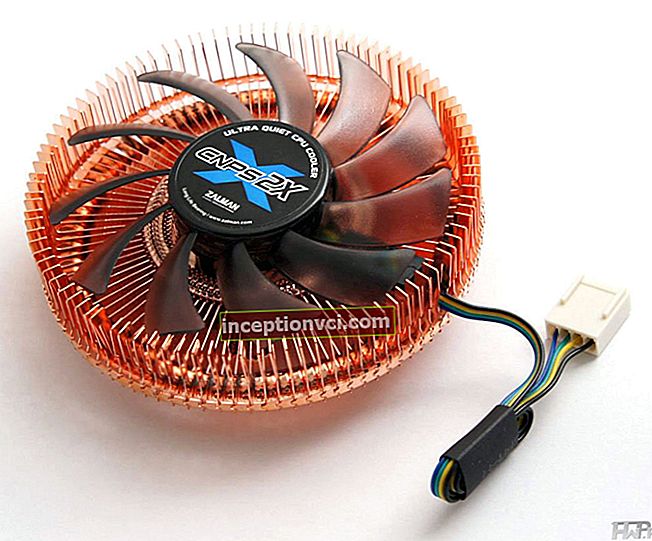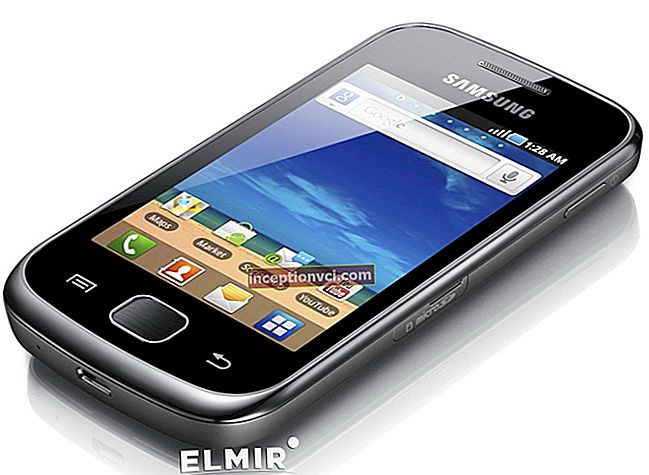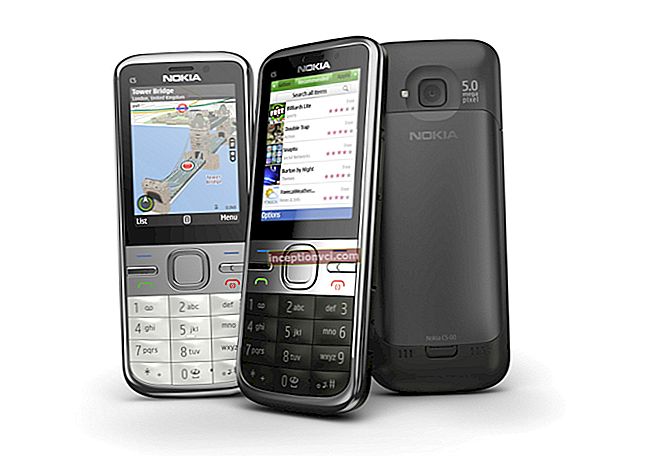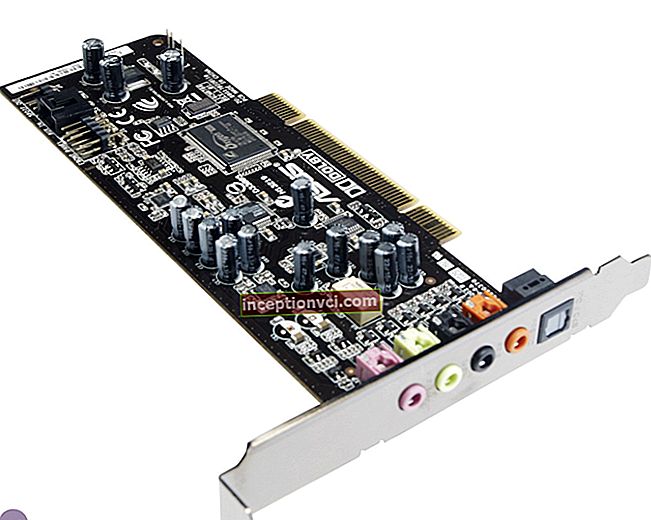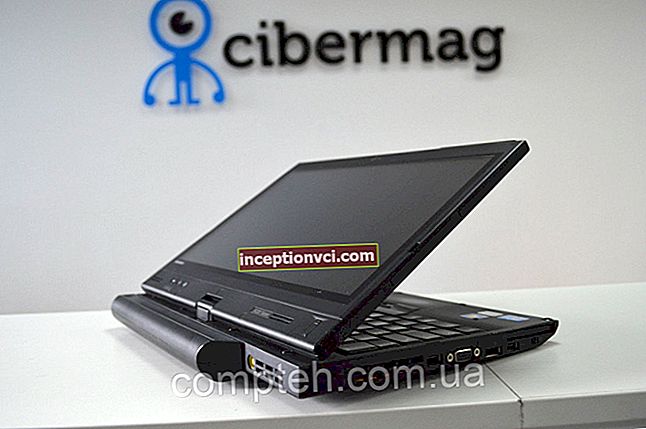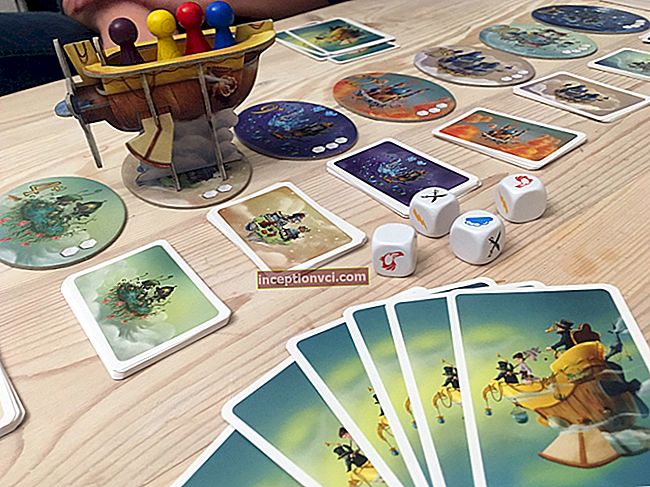Although Panasonic released two micro 4/3 cameras last year, with the Panasonic GF1 they decided to try to realize the format's full potential. The main advantage lies in the size, and first of all the optics, and not the body of the device itself. Another important plus of the Panasonic GF1 relative to a similarly sized digital camera is its larger sensor, which provides better sensitivity to light, and, of course, interchangeable lenses, which allows the camera to expand its capabilities dramatically.
The Panasonic GF1 has a 12.1-megapixel sensor, 3-inch LCD, and a 20mm f / 1.7 prime lens. A built-in pop-up flash is located at the top of the body, and the GF1 also has an external flash hot shoe that can be used to mount an optional electronic viewfinder tilted up 90 degrees.
Users can switch between still and video modes by choosing between the shutter release or the Record button.
The Panasonic Lumix DMC-GF1 is available in two different configurations. The DMC-GF1C kit comes with a 20mm f / 1.7 lens, the DMC-GF1K kit comes with a 14-45mm f / 3.5 - 5.6 OIS lens. External viewfinder sold separately.
User review
Since Panasonic is the creator of the first digital camera of the micro 4/3 standard, it is natural that it produces a device of this format with minimal dimensions. After the highly successful Olympus E-P1, it's nice to say that Panasonic is not going to leave the small SLD segment.
On the contrary, they produce the same small, convincing and attractive digital camera that will appeal to users who do not want to compromise on image quality. In addition, its dimensions and weight are in every possible way to take with you even on a long trip.
As a company that attracts and retains many new enthusiastic fans with the LX3, ZS3, and FZ-series digital cameras, Panasonic naturally produces small, flat micro 4/3 cameras with the same aesthetic design. And that's exactly what they did: they combined the versatility of the Lumix G1 with the small footprint of more traditional Deluxe digital cameras such as the LX3 and made the Panasonic GF1.
Appearance and design
The Panasonic Lumix GF1 is small, compact and convenient with just what you need. But such asceticism can also be beautiful. Its weight (346 g) allows you to feel the strength and balance of the structure. The Olympus E-P1, by comparison, weighs 454g with a 17mm lens, so they are remarkably similar. Dimensions are also similar, Panasonic GF1 carcass 119 x 71 x 36.3 mm, and E-P1 121 x 70 x 35 mm. So the E-P1 is slightly wider, slightly shorter, and slightly thinner than the Panasonic GF1 by just a millimeter or so. The Panasonic GF1 actually feels smaller and more compact. This is not to say that he is better than others, just different.

Let's start at the front of the Panasonic GF1. It has an excellent finger grip, ample for a flat camera, and is quite comfortable to hold while shooting. An autofocus lamp peeks out from under the Lumix logo, and a silver lens release button is located to the right of the lens. Four holes are visible above the top of the lens and below the hot shoe. At first we thought they were for the microphone, but it turns out that they are for the speaker, it is not clear why they go to the front, perhaps this is the only place that we managed to find.

From above, the GF1 looks like most digital cameras. The hot shoe has a unique cover, but what is hidden under it is discussed below. There is one small microphone hole at the top right of the shoe. Next, we see the mode dial, below it is the timer and burst mode switch.A simple power switch is behind the shutter release, and to the right of it is the video recording button: each of the modes is available at any time. The shutter button is responsive, with a smooth transition to full press. It differs from the Olympus E-P1 in clearer response.
Note also that the Panasonic GF1 has more modern strap tips. The metal D-rings on the E-P1 and a few other DSLRs are not suitable for video because they make noise that the camera's microphone picks up clearly. So the fabric in this case is much preferable.

The 3-inch LCD is very clear, with 460,000 dots, enough to confirm focus with great precision, and better than the 230,000 dots of the E-P1. The control buttons are small, but feel good tactilely. Textured plastic for better grip is applied only to the right, completing the snug fit for the hand.
Flash

The rear-panel OPEN buttons activate the spring-loaded flash mechanism that pops up and forward at the same time. The hinge mechanism works impressively, although many people could accidentally damage it when trying to close it. Folding must be done in the reverse order, applying force downward and backward.
The flash has a guide number of 6 meters at ISO 100, which is significantly lower than the flash in FL360 and FL500.
Electronic viewfinder


Now let's take a look at a unique part of the body: its connector for the optional DMW-LVF1 rotary electronic viewfinder. This accessory can be used if you have trouble viewing the LCD in direct light, or if you simply prefer to shoot while looking through the viewfinder.
LVF1 resolution is 202,000 dots, but with 60fps refresh and 1.04x magnification. It comes in a very thick leather case with a carrying loop. There is a plastic socket inside the case, in which the DMW-LVF1 is quickly and safely fixed.
Sensor

The Panasonic Lumix GF1 is based on the Panasonic Live MOS image sensor with dimensions of 17.3 x 13.0 mm, which is the standard size for micro 4/3 and 4/3 camera formats. The specific sensor model in the Panasonic GF1 is the same as in the Panasonic 2008 G1 - the first micro 4/3 camera.
The sensor has an effective resolution of 12.1 megapixels, and gives an image in the aspect ratio of 4: 3 with dimensions up to 4000 x 3000 pixels. In addition to two low-resolution 4: 3 modes of 2816 x 2112 and 2048 x 1536 pixels, the Panasonic GF1 offers three modes in 3: 2, 16: 9 or 1: 1 aspect ratios. Panasonic GF1 in 3: 2 mode creates an image of 4000 x 2672, 2816 x 1880 and 2048 x 1360 pixels, in 16: 9 mode, an image of 4000 x 2248, 2816 x 1584 and 1920 x 1080 pixels, and for 1: 1 mode, the characteristic resolutions are 2992 x 2992, 2112 x 2112 and 1504 x 1504, respectively.
ISO range
ISO sensitivity ranges from 100 to 3200. There is also an automatic mode, the upper limit can be defined by the user from 200 to 1600, as well as an intelligent ISO function that takes into account not only the brightness of the scene when determining the sensitivity, but also the movement of the subject.
Dust removal
The Panasonic GF1 incorporates an ultrasonic dust filter system that vibrates above the image sensor at 50,000 cycles per second to remove dust that settles on the sticky material under the filter.
Autofocus
The Panasonic Lumix GF1 offers 23-point TTL contrast detection autofocus and includes an autofocus lamp to assist with focusing in low light conditions. There is also a multi-point focusing mode, in the GF1 one-point AF, tracking autofocus, and face detection mode can be selected.
If a face is detected, the camera can automatically adjust focus and exposure to ensure that the subject's face is displayed correctly. When detected in the frame, six faces can be given priority over others in the scene (and over each other, according to the order that is set when the camera is taught) when determining the exposure, in addition, the names of up to three faces can be automatically entered into the image metadata.
Face recognition also offers help with playback mode, making it easier to find photographs of a specific person - and in the event that a face is not detected correctly, the marks can be changed after the capture. But images that were not tagged when shooting cannot be tagged manually. Panasonic GF1 can recognize up to six people, assign names to each, and you can store up to three images of each face, the camera could more accurately detect and recognize people.
Modes
The Panasonic GF1 includes Intelligent Auto, Program, Aperture Priority, Shutter Priority, Manual Shooting, Movie P, Custom 1 & 2, Scenes, Custom Colors.
Panasonic GF1 Custom modes allow four groups of settings to be saved for later - one instantly accessible through the Other1 position, and the other three access to the location dial in the Other2 position, then use the Menu / Set buttons and arrow buttons to select Other2-1, 2- 2 or 2-3. The sounds are unusual, but it will be useful for more serious photographers who want several standard settings readily available.
Scene Position offers 17 modes to help beginners get the results they want with minimal effort: Portrait, Soft Skin, Landscape, Architecture, Sports, Peripheral Defocusing, Floral, Food, Subjects, Night Portrait, Night Landscape, Fireworks, Child 1 + 2 (You can track the birthdays of two different children, which allows Panasonic software to display the child's age along with the photo), pets, party, sunset.
Eleven of these shooting modes are applicable not only for still images, but also for video recording. Panasonic GF1 Intelligent Auto Mode can automatically detect certain types of scene and select the appropriate mode from the following set: portrait, landscape, macro, night portrait, night landscape or child. Custom Colors Position allows the user to choose from eight predefined picture styles - expressive, retro, clean, elegant, monochrome, dynamic art, silhouette, or custom - and allows each style to be fine-tuned to the user's tastes for hue, brightness, and color saturation.
Excerpt
Shutter speeds are available in a focal length range of 1/4000 to 60 seconds, plus lamp mode is limited to a maximum of four minutes. Flash sync can be found from 1/160 second. The Panasonic GF1 uses 144-zone matrix metering to determine exposure, and the metering mode includes intelligent multi-zone, center-weighted and spot. 3.0 EV exposure compensation is available in 1/3 EV steps, and the GF1 allows exposure bracketing in 0.3 or 0.7 EV steps over three, five, or seven shots.
White balance modes include auto, five presets (daylight, cloudy, shade, halogen, flash), two manual white balance settings, and the ability to set the color temperature directly. White balance bracketing is also available on either side of the blue / amber and magenta / green axes.
The Panasonic GF1 also retains a few more unusual features from the G1 and GH1 models. Several video modes allow the photographer to choose from a variety of rendering colors, similar to choosing different types of film. The Panasonic GF1 offers six color and three black and white modes, all of which can be fine-tuned for contrast, sharpness, saturation and noise power.
In addition, there are two custom video modes that allow the user to optimally save the video for future use. Finally, the multi-movie setting will give the photographer a choice of two or three types of film in sequence each time the shutter button is pressed.
Playback
Two closely related playback modes have been successfully updated on the Panasonic GF1.The slide show and playback mode in the G1 and GH1 allows the user to restrict the selection of images to only those whose faces are recognized by the camera's recognition system, which is extremely convenient for quickly finding images or viewing in a slideshow of people you most likely want to see ... GF1 adopts this advanced option, which allows you to filter images not only containing recognized faces, but also those files that are marked as belonging to some other categories - portraits (including baby and soft skin), landscape (including architecture and sunset) , night, sport / party, baby, pets, groceries, travel and video.
Video
In addition to capturing still images, the Panasonic Lumix GF1 is also capable of recording video clips using AVCHD Lite or Motion JPEG compression. The Lite AVCHD designation is a variation of the AVCHD format jointly developed by Sony and Panasonic, and its supporting devices are capable of recording at a maximum resolution of 720p (1280 x 720 pixels) using MPEG-4 AVC / H.264 compression. The previous model GH1 supports the full AVCHD specification, which allows it to offer 1920 x 1080 (1080i) mode.
Another difference in video mode between the GF1 and GH1 is that the model we are reviewing does not allow direct control of the shutter speed when recording video. Instead, in movie mode, P allows only aperture and exposure compensation to be controlled. The Panasonic GF1 also converts to stereo from its built-in monaural microphone and has a jack for an external device. A big plus is that there is still no limit to the length of a clip when recording using the AVCHD Lite mode, the limitation is introduced only by the free space on the memory card, its performance and battery charge.
Panasonic GF1 offers three levels of compression for AVCHD Lite clips, 17Mbps, 13 Mbps or 9 Mbps. As an alternative to AVCHD Lite, Motion JPEG mode allows you to record video at 30 frames per second with a resolution of 1280 x 720, 848 x 480, 640 x 480, or 320 x 240 pixels.
The camera can also operate with continuous autofocus during movie recording if the attached lens supports this capability. The Panasonic 20mm lens performed fairly quickly during testing and performed well in focusing, while the Olympus 17mm lens was slightly noisier and more manipulated to adjust focus.
Frame shooting
Panasonic GF1 can store images in RAW or EXIF 2.21-compliant JPEG format with good or standard compression levels, it is possible to save each image in both RAW + JPEG formats at the same time. SRGB and Adobe RGB color spaces are available.
Burst shooting allows up to three frames per second, and is limited to approximately seven RAW shots per burst. (We got a little less in our tests: 2.82 fps for 6 RAW files.) When shooting in JPEG format, there is no limit to the burst length, everything, as usual, rests against the free space of the flash card and the battery capacity, of course , with sufficient write speed of the flash card. Images are saved on SD cards, including SDHC higher capacity types.
System

An important feature of the Panasonic GF1 is that it supports an advanced family of optics. Thus, the Olympus 17mm f / 2.8 lens and Olympus FL-14 flash can be used without issue, but the Olympus VF-1 optical viewfinder, which comes with a 17mm lens, does not fit into the GF1 hot shoe.
Panasonic is very aggressively promoting lenses for the 4/3 micro platform, while Olympus has just joined this community with the release of the E-P1. Eight lenses are now available, covering a focal length range from 7mm to 200mm, which is equivalent to 14mm to 400mm for a 35mm camera. Four of these lenses have image stabilization, plus there is one macro lens, and two slim designs for a flat profile. All the lenses we tested are pretty impressive, especially the 7-14mm outstanding. The Olympus M.Zuiko 14-42mm is technically advanced with the camera mounted on a tripod, but when used handheld or on the Olympus E-P1, the Panasonic GF1 lens can vibrate, causing blurred images.
Lenses standard 4/3
|
|
Panasonic 14-45mm f / 3.5-5.6 | Olympus Zuiko M 14-42mm f / 3.5-5.6 |
|
|
Panasonic 20mm f / 1.7 | Olympus Zuiko 17mm M. f / 2.8 |
|
|
Panasonic 45-200mm f / 4.0-5.6 | Panasonic 14-140mm f / 4.0-5.8 |
|
|
Panasonic 7-14mm f / 4.0 | Panasonic 45mm f / 2.8 Macro |
Interfaces
The Panasonic GF1 includes a Type C mini HDMI connector that allows high definition images, as well as a standard monaural NTSC / PAL compatible eight-pin audio / video output, which is different from the GH1's 14-pin connector. For transferring images to a computer, the Panasonic GF1 offers USB 2.0 High-Speed connectivity. There is also a 2.5mm jack for a wired remote control.
Battery
Powered by Panasonic's own 7.2 V, 1250 mAh Li-ion battery (DMW-BLB13PP), the same variant is used in the G1 and GH1. The GF1 supports ID-Security technology, which allows the use of third party batteries.
Battery capacity is rated at 380 shots when using the LCD and 20mm f / 1.7 lens, or 350 shots when using the LCD and 14-45mm f / 3.5-5.6 lens. Switching to an optional external EVF increases battery life by about 50 shots with any lens, thanks to the reduced power consumption of the LCD viewfinder.
Shooting with Panasonic GF1
Compared to the Olympus E-P1, the Panasonic GF1 is similar, perhaps even slightly more pleasant to use, thanks to its faster autofocus and simpler interface. Both of these small cameras take up minimal space to transport when compared to some rather large DSLRs, they are just another accessory in size, easily fit into a briefcase, laptop bag with an extra lens, or even two. At the same time, the cameras allow you to take pictures that look like they were taken with a large digital SLR.
20mm Kit

With a 20mm f / 1.7 lens pre-installed, the Panasonic GF1 looks great. It is somewhat similar to a reportage camera, and, one might say, is the purest expression of the perfection of Japanese design. It's tempting to compare it to German rangefinder mystery, but this Japanese minimalism is beautiful on its own.
As for the lens itself, the 20mm f / 1.7 takes very smooth and sharp shots across the frame from f / 2 to f / 22, and only slightly softens the corners at f / 1.7. Her favorite range is f / 2 to f / 8. Chromatic aberration is also low, lower than the M. Zuiko 17mm f / 2.8. There is some vignetting (shading at the corners) when opened wide. When shooting video, the focus is slightly farther than the manual 17mm. The latest firmware update has significantly improved the behavior by 17mm, but jumps and noise during recording are even more noticeable.
20mm is a bit wide for portraits as it introduces too much perspective distortion when shooting people at portrait distance, but it's an impressive lens for outdoor and outdoor photography. There is very little geometric distortion, possibly due to in-camera post-processing, which makes all images from 20mm rather straightforward.
14-45mm Kit
Paired with a 14-45mm f / 3.5-5.6 lens, the Panasonic GF1 is less compact, but hangs flat on the shoulder and practically does not lower the body down. It's easy to forget that this is an OIS lens, but the video recording process reminded me of this: the hand-held video came out surprisingly clear.
And even when shooting, when the camera had to be held over the heads of people in front of you, which caused a lot of shaking, there were no significant effects in the form of blur.
Testing the 14-45mm on the Panasonic G1 showed it to be an excellent lens, and shots are mostly flat even at wide angles. This is rarely the case with the supplied lenses. Panasonic does in-camera post-processing, but it does it so well that no questions asked. It is difficult to distinguish between shots taken with a 20mm and a 14-45mm lens without reading EXIF, which is a good sign.
It is difficult to decide which of the lenses to choose in the kit. Convenient not to worry about focal length from 20mm.As you get used to it, it is very comfortable to always know what to expect, especially when the camera is trained on faces. Of course, the zoom gives you more options when photographing children, or when it is not possible to get closer to the subject.
Some lenses cost very little, but the quality is really impressive. The best is the 7-14mm lens, whose performance was surprisingly good when we tested it with the GH1, justifying buying a Panasonic G-series on its own.
Benefits
It is impossible to point to a single aspect that would require a radical change. One can reproach that the plastic used for the interface ports on the left side is too hard. The small black buttons on the back of the camera are optimally sized to stay out of the way until you need them, but it's intuitive to find them even in the dark. After getting used to the controls, of course. The gently curved strap mounts readily accept a fabric strap for videography preference. Both the shutter buttons and the lens release button have beautifully crafted metal parts that convey a sense of precision while still responding smoothly.
The only ergonomics issue I had to deal with was that it was usually accidental to change the timer switch position when trying to turn the mode dial. But this is a matter of habit, because in fact it is convenient to switch manually without having to go into the software settings. It's easier to learn to control your behavior than to constantly tinker with the menu.
Shooting with the Panasonic GF1 is better than you might imagine. The focus is very fast, noticeably faster than the Olympus E-P1, and pressing the shutter produces a nice, quiet shutter sound, and the image appears instantly. This happens quickly enough that you can enjoy your hobby without thinking too much about the settings. Setting the parameters is pretty easy. You can start shooting in program mode by quickly turning the dial, and at this time a sliding scale pops up on the screen to give you a graphical representation of what you can get in the picture.
The scale also appears in aperture priority, shutter speed, and manual modes. In manual mode, you can switch between the two by selecting on the disc. Even in Intelligent Auto and Scene modes, you can quickly adjust exposure settings, plus or minus 3 EV.
Not for sports
If you are looking for a camera for action and sports photography, larger DSLRs will do better. The burst rate is just under three frames per second, which makes capturing action difficult - especially since most cameras in the price range have an optical viewfinder. The LCD monitor turns off during continuous shooting, showing only the last frame, and does not return to Live View to continue tracking the subject. You could buy a small optical viewfinder and use it to keep the camera on target, but this is not a guarantee that you will get normal images at all focal lengths (unless using a 20mm lens). Of course, you can also shoot a movie in HD JPEG mode and select 1280x720 pixels for web use.
Quick menu
The Panasonic GF1 gives access to the quick menu from an existing icon on the display, displaying a list of icons at the top. Pressing the Q menu button brings up any item that was last changed, it turns yellow and appears on the screen. You can move between items at the bottom and top of the screen using the left arrow; you can select from each drop-down menu using the up and down arrows.
Bright Nostalgic Dynamic b / w Having entered the video menu, first of all, it is interesting how the video will look in black and white. The menu items are somewhat scattered, but you can use Multifilm mode to expose three different video styles in quick succession, just like bracketing.You must press the shutter three times in a row. You can set the default, standard, dynamic, and B&W dynamic, or those that you will use most often. Of the three options, nostalgic video mode is best suited for the scene. There are three black and white modes, including standard, dynamic, and anti-aliased. Dynamic provides sharper contrast, corrected for the scene for good black and white tones, while the other two are more boring. We found that the dynamic range of the Panasonic GF1 was lower than most modern DSLRs, which means you are more likely to lose shadow detail or light up the sky in your footage, especially when taking landscape shots during the day. It's not that uncommon, we've seen the same with the Olympus E-P1 in the pictures. You should also be careful when shooting a wedding with the GF1 without exposure. But the Panasonic GF1 has such extensive bracketing features to shoot three, five or seven frames with exposure compensation that landscape photographers should feel pretty confident shooting the GF1 in bright daylight. As for the rest of the options available, not everyone will be too interested in features such as peripheral defocusing or face detection. This is more a prerogative of compact cameras, so we will focus more on using the Panasonic GF1 as an enthusiast camera. The camera was used primarily in aperture priority mode, with a center AF point, adjusting ISO and video type when needed. Auto white balance was pretty good most of the time, even indoors. Shooting video with the Panasonic GF1 was more comfortable than the Olympus E-P1, probably because the GF1 has a built-in record button, allowing you to instantly start filming without having to switch the mode dial. Most DSLRs are too heavy to hang around your neck, but the Panasonic GF1 hangs there just fine without causing any strain. The strap still gets in the way when shooting vertical images, but its fabric connection to the body doesn't make any noticeable noise, so it's the perfect combination. Panasonic GF1 Image quality One of the problems with the GF1 also applies to the GH1 and G1: yellow and orange camera processing. Yellow has a green tint, orange becomes muted, almost brown. Switching to dynamic video mode corrects the problem somewhat, but it changes the overall contrast, color settings, for example, red and purple, in the most undesirable way. The good news is that shooting in RAW and processing with Adobe Camera RAW fixes the problem completely. If you're okay with shooting and processing RAW images - let alone storing them on your hard drive - these peculiar color problems won't bother you, but they are worth considering if JPEG is your preferred shooting method. Yellow and orange problems in JPEG The top JPEG image was captured in Still Life mode, taken directly from the camera. The fourth, fifth, and sixth strands should be different shades of yellow, but they appear greenish, and the third strand should be significantly more orange than brown. The version below, converted from RAW by Adobe Camera RAW, shows true color rendering. ISO 1600 Image quality It's interesting to see how the camera performs at ISO 1600 because many people like to take pictures in low light without a flash. Since most cameras these days shoot fairly well at ISO 1600, this is a reasonable benchmark for how well the camera delivers a trade-off between noise and color and detail retention. The Panasonic GF1 has a very aggressive approach to noise reduction at ISO 1600, while the Olympus E-P1 allows some color noise in photography. As a result, the GF1 loses some of its color.The GF1 also didn't handle the lighting as well as it could, giving the image a green tint. Analysis For a long time, the world of photographers has been waiting for at least one of the main camera manufacturers to release a small DSLR camera with interchangeable lenses so that it can rival the size and image quality of the SLD series. After a lot of waiting, compromises and disappointments, we get two completely convincing solutions from two manufacturers. And what's the most interesting thing? They are relatively compatible with each other as both are micro 4/3 standards. The Panasonic GF1 and Olympus E-P1 have their merits and both have a pretty attractive image. The Panasonic GF1 has faster autofocus, making it the best choice for journalists and people with children, although you will have to be careful with yellow and orange when shooting in JPEG format. The Olympus E-P1 has a significantly slower autofocus, although it is not that noticeable. This difference becomes noticeable when you try to focus while shooting video, and not only is it a flaw on the Olympus camera, the lens also introduces its own lag, while the Panasonic 20mm lens we tested ran quickly and quietly during reorientation. We hope that this will be the same with the rest of the optics from Panasonic and Olympus, perhaps a firmware update will improve their speed. It is absolutely clear that Panasonic and Olympus have identified and quickly exploited a niche in the market. Like a netbook in the computer world, micro 4/3 cameras are delivered at the perfect time, offering a compact solution for high quality images. They are not as inexpensive as netbooks, but cheaper than many devices. If Panasonic can produce enough cameras, the Panasonic Lumix GF1 has every chance of becoming a bestseller. Conclusion - high build quality; - lightweight with 20mm lens; - can be installed in any small place; - excellent quality lenses included; - the camera successfully corrects geometric distortion and chromatic aberration; - accurate LCD viewfinder; - very good automatic white balance under incandescent light; - excellent autofocus performance in low light conditions; - excellent low light shooting; - very fast definition of contrast; - Better definition of detail in the camera in JPEG format than any previous model; - no "stripes" in images at very high ISO; - has a built-in flash; - HD video mode provides good quality; - the belt does not make noise, which is fixed during video shooting; - the timer switch is made not by software, but on the control panel; - additional electronic viewfinder; - built-in dust filter; - several options for bracketing; - Various video modes with the ability to quickly change color settings; - Multi-video mode; - there is no limit to the length of the video (AVCHD Lite); - Possibility of AVCHD Lite or Motion JPEG video compression; - continuous autofocus during video recording (if the lens allows); - eight lenses to choose from; - optional virtual analogue calibration helps to adjust the aperture and shutter speed in programmed, manual and semi-automatic exposure modes; - 20mm lens gives vignetting when open wide; - yellow and orange colors have a green tint in JPEG files; - presence of ghosting with default settings; - high contrast in direct sunlight; - limited dynamic range compared to most SLR cameras; - noise at high ISO; - in the intelligent exposure mode, some images are smoothed; - weak built-in flash; - long startup time (compared to SLR cameras); - Low battery life due to using only the LCD screen as a viewfinder (compared to SLR cameras); - there is no image stabilization in the camera; - Optional optical viewfinder occupies hot shoe; - no direct control over shutter speed for video; - Various video modes with the ability to quickly change color settings; - Multi-video mode; - there is no limit to the length of the video (AVCHD Lite); - Possibility of AVCHD Lite or Motion JPEG video compression; - continuous autofocus during video recording (if the lens allows); - eight lenses to choose from; - optional virtual analogue calibration helps to adjust the aperture and shutter speed in programmed, manual and semi-automatic exposure modes; With almost everything you want in a DSLR with the convenience of a compact digital camera, the Panasonic GF1 is the most sophisticated of a new category of small digital interchangeable lens cameras. Its small size allows it to fit into very small bags or briefcases along with accessories, but its large sensor size and interchangeable lenses mean you don't sacrifice image quality or versatility by ditching the SLR. Like most pocket digital cameras, the Panasonic GF1 does not have an optical viewfinder, and Live View is on all the time. To shoot video, simply press one button to start recording right next to the shutter release. An optional electronic viewfinder (EVF) mounts on the Panasonic GF1 as a hot shoe for those who shoot in bright daylight or just want to work that way. The Panasonic GF1 is built tightly and compactly, and the design fits in with several of Panasonic's recent highly popular digital camera enthusiasts, the LX3 and ZS3. Not bad performance, the Panasonic GF1 shoots as fast as some DSLRs, and the image quality is also quite impressive, with ISO 800 it looks decent when printed at 33x48cm.We found continuous shooting to be slightly slower than indicated, not 3 frames per second. There is also a slight yellow and orange distortion in JPEGs, and the dynamic range could have been better, but overall the Panasonic GF1 really impressed. For some, however, the Panasonic GF1 is not an ideal choice for sports photography because the lack of an optical viewfinder makes it extremely difficult to track a subject. Optics are not a small part of the high image quality of the Panasonic GF1. Both sets of lenses look very good in our shots with excellent sharpness. They are assembled soundly, distortion is low, they work quietly and quickly. Among other things, automatic white balance works well in changing different lighting conditions, outperforming most DSLRs in this regard. The HD video mode also enjoyed good video quality, and we liked the ability to shoot in aperture priority mode, which only a few DSLRs can also offer. While the flash is weak, it can be turned on for filling when needed, and there is a hot shoe for mounting an external flash. However, the low-light mode of the Panasonic GF1 is good enough, the high ISOs are pretty good, they don't introduce much noise, so the need for flash is minimal. Overall, the Panasonic GF1 is an extremely good camera for such a small footprint, recording impressive thanks to its sensor quality system, image processor, and fine optics. 










Pros: Minuses:








